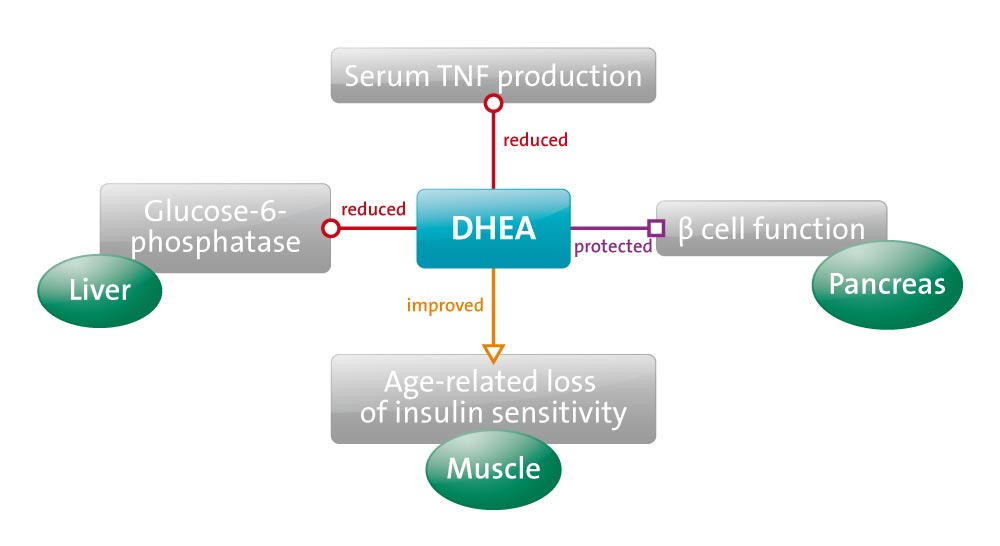The levels of dehydroepiandrosterone (DHEA) and its sulfate (DHEA-S) peak in human in their twenties, then decrease gradually with age. The physiological importance of DHEA was not clear until recent research reports showing that DHEA has beneficial effects on preventing diabetes, malignancy, inflammation, osteoporosis, and collagen disease.
We summarize our results concerning diabetes, hepatitis, and colon cancer. In 1982, Coleman et al. [Diabetes 31 (1982) 830] reported that DHEA decreased hyperglycemia in diabetic db/db mice, which become insulin resistant. We measured hepatic gluconeogenic enzymes in an attempt to elucidate the mechanical mechanism of DHEA action. The activity and gene expression of hepatic gluconeogenic enzyme such as glucose-6-phosphatase (G6Pase) was increased in db/db mice despite hyperinsulinemia compared to control db/+m mice. DHEA, like troglitazone, decreased these levels in db/db mice.
We also showed that DHEA improved the insulin resistance caused by aging or obesity using the glucose clamp technique in another animal model. In humans, the serum DHEA concentration was shown to be associated with hyperinsulinemia in diabetes. It also became clear that DHEA increased insulin secretion in old-aged db/db mice. DHEA increases not only insulin sensitivity due to the effects in the liver and muscle, but also insulin secretion.
As an effect of DHEA on T-cell mediated hepatitis induced by concanavalin A (ConA), DHEA reduced hepatic injury by inhibiting several inflammatory mediators and apoptosis. As an effect of DHEA on carcinogenesis, DHEA would be a potential chemopreventative agent against colon cancer because it decreases the number of azoxymethane (AOM) induced aberrant crypt foci, which is a possible precursor to adenoma and cancer in a murine model.
Thus, since DHEA has many beneficial effects experimentally, we should consider administration of DHEA in the future, and common mechanisms among these actions of DHEA should be elucidated in further studies.
